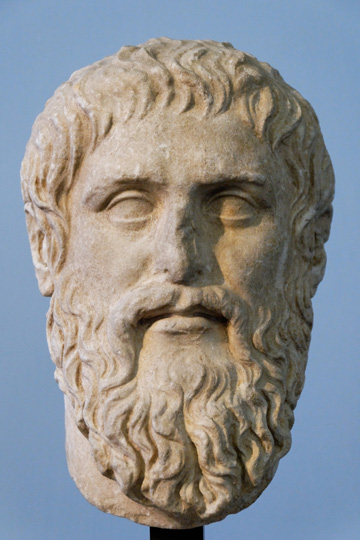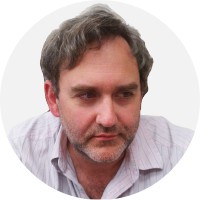The views expressed in our content reflect individual perspectives and do not represent the authoritative views of the Baha'i Faith.
What a penetrating vision into philosophy this eminent man had! He [Socrates] is the most distinguished of all philosophers and was highly versed in wisdom. We testify that he is one of the heroes in this field and an outstanding champion dedicated unto it… He it is who perceived a unique, a tempered, and a pervasive nature in things, bearing the closest likeness to the human spirit, and he discovered this nature to be distinct from the substance of things in their refined form. He hath a special pronouncement on this weighty theme. Wert thou to ask from the worldly wise of this generation about this exposition, thou wouldst witness their incapacity to grasp it… – Baha’u’llah, Tablets of Baha’u’llah, p. 146.
The Baha’i teachings have high praise for the philosopher Socrates and his pupil Plato.
As the protagonist of Plato’s discourses, it is difficult to disentangle Socrates’ ideas from Plato’s. Outside of their ideas about political philosophy, Plato also concerned himself with the so-called theory of forms, and Baha’u’llah attributes this concept to Socrates. However, Baha’u’llah’s appreciation seems to go much further than just the theory. The theory of forms claims that non-physical idealized forms or ideas represent the most accurate reality, and that physical objects derive their ‘essence’ from their relationship to these forms—often described as models or templates from which imperfect copies or projections are made in the physical world.

Bust of Plato
Plato uses the well-known cave analogy to illustrate this relationship. He imagined several prisoners trapped in a cave deep underground, their bodies and heads held immobile with chains and brackets against one wall. On the other wall the prisoners see projected shadows of objects, cast by a large torch behind their heads. The prisoners only know this one reality, and so mistake the shadows they see projected on the wall for reality itself. Eventually one of the prisoners escapes, sees the real objects being projected and realizes the nature of the deception. Plato likens this freed prisoner to the enlightened philosopher or, as we might say, a spiritually awakened person. The rest of the prisoners symbolize all of humanity, and the shadows what we understand as physical reality.
This idea of a separation between the “essence” of a thing and its actual physical attributes held powerful sway over Christian and Islamic thought for centuries, since it fit very well within their theologies. However, by the middle ages Nominalists like William of Ockham (of Occam’s razor) began to question this viewpoint. Later, British Empiricists like Hume rejected the Platonic notion of essences existing apart from physical reality, and his viewpoint now dominates present-day scientific thought. The idea of an essence beyond what we can directly measure seems like pseudoscience. This may be more a problem of language, however, especially when one reflects on the triumph of math in modern physics, and the growing view that math somehow represents the “true” nature of reality.
This radical view of math originated in the 1920s, with the introduction of the quantum wave equation by Schrodinger and the matrix representation by Heisenberg. The new wave function presented a scientific problem: it was explicitly non-physical, due to the fact that a wave was an imaginary or complex valued object. Additionally, when evaluated to generate measurable quantities, it operated in a probabilistic manner.
The so-called Copenhagen interpretation somewhat resolved the debate over what this wave function represented physically. At the heart of this view, Max Born’s thesis showed that the wave function is simply a mathematical object which can yield a probability density function — thus it has no physical meaning outside of mathematics and its ability to “predict” a particle’s behavior. Many physicists hated this interpretation, though it has become increasingly accepted in the ensuing 80 years. It was actually Heisenberg himself who grasped the connection between of quantum mechanics and the Platonic viewpoint, when he wrote:
I think that modern physics has definitely decided in favor of Plato. In fact the smallest units of matter are not physical objects in the ordinary sense; they are forms, ideas which can be expressed unambiguously only in mathematical language.

Bust of Socrates
If we now return and reflect on Baha’u’llah’s praise of Socrates, the innovation he attributes to the Greek philosopher becomes even more explicitly consistent with modern quantum field theory and Plato’s theory of forms. It would seem that Baha’u’llah and Socrates both describe, within the limits of the language available, the existence of a quantum field.
If we reflect on the word “spirit” and what it really means, one can see that it contains both the concepts of non-physicality and pervasiveness, which are the hallmarks of the quantum wave function. In fact Baha’u’llah even used the word “pervasive” as if to emphasize this aspect.
Finally, Baha’u’llah also states that the people of his generation were incapable of grasping the implications of this idea. This is an interesting point, since Plato’s theory of forms was of course well known and thoroughly studied for millennia. One could understand such a statement in light of the discoveries in physics some 50 years later, with the important difference however that he seems to imply — by using the word “things”—that this type of relationship exists not only between basic particles of matter, but well beyond it.
Baha’u’llah’s son and appointed interpreter, Abdu’l-Baha, also seems to presage important concepts in many of his philosophical talks, often decades before they became current among physicists. For example in his excellent article “Ether, Quantum Physics and the Baha’i Writings” Robin Mihrshahi points out how Abdu’l-Baha used the word ‘ether,’ commonly understood at that time as the medium for propagation of electro-magnetic waves, in a totally new manner consistent with quantum mechanics. Abdu’l-Baha describes ether not as a physical reality but as an intellectual one:
Even the ether, the forces of which are said in natural philosophy to be heat, light, electricity and magnetism, is an intelligible and not a sensible reality. – Some Answered Questions, newly revised edition, pp. 93-94.
We will explore, in the next two essays in this short series, even more remarkable parallels between the philosophy of Socrates and Plato, the Baha’i teachings and the newest scientific discoveries from theoretical and quantum physicists.
Next: The Way to True Scientific and Spiritual Knowledge
You May Also Like
Comments

















Darryl